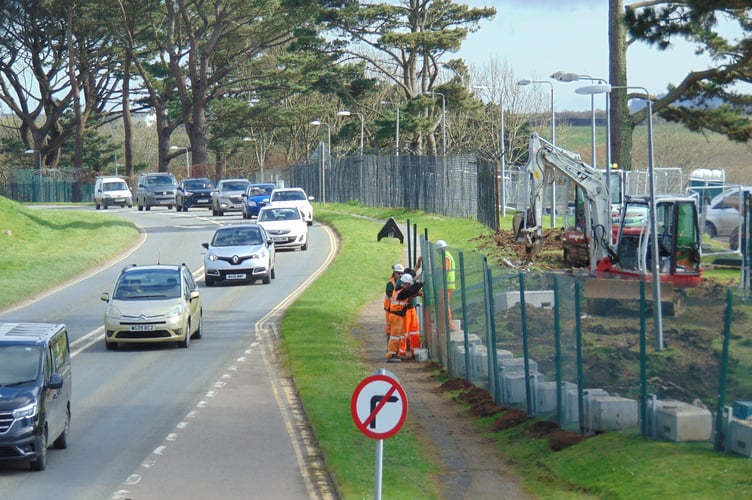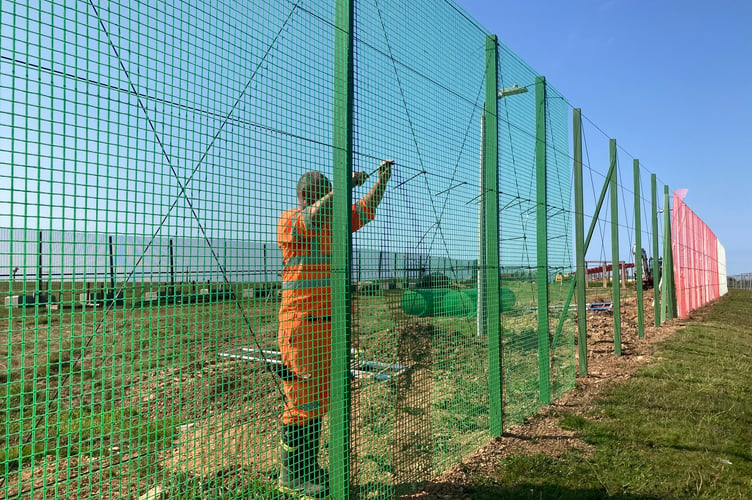CONTRACTORS have completed their project to replace the security fence around Royal Naval Air Station Culdrose.
It has been a major undertaking to keep the Royal Navy helicopter base secure and complete the work around the entire perimeter of the Cornish air station ahead of schedule.
As well as the fence, which includes new red and white panels to mark the approach to each runway for incoming aircraft, several new gates have been installed and 6,600 trees planted on land away from the airfield.

The work has been done by Littlewood Fencing Group in a project by the Defence Infrastructure Organisation (DIO), Royal Navy Command Infrastructure, VIVO Defence Services and RNAS Culdrose Infrastructure Team.
Captain Irwin said: “I have to congratulate all the team on completing this major work ahead of schedule. They’ve been working all this year and I am well aware that any project on this scale will inevitably create its fair share of challenges, which have all been overcome.
“This investment also demonstrates the importance of RNAS Culdrose as the home of the UK’s maritime Merlin helicopter fleet. It recognises that the air station continues to play a central role in the defence of our nation.”

VIVO Defence Service’s operations director Amanda Hill said: “Replacing nine miles of security fencing around one of the Royal Navy’s most strategically important air stations is quite a task and I congratulate everyone involved for completing this ahead of time and within the budget.
“I would also like to applaud the fact that 6,600 trees were planted across the base as part of this project as this will have a long-term positive impact on the environment.”
RNAS Culdrose, at Helston, is the home of the Royal Navy’s anti-submarine warfare Merlin Mk2 Helicopter Force which protects UK waters and the navy’s carrier strike groups. The air station also trains aircraft handlers, aircrew in fixed-wing Avenger aircraft, and tests and evaluates drones for use by the Royal Navy.




